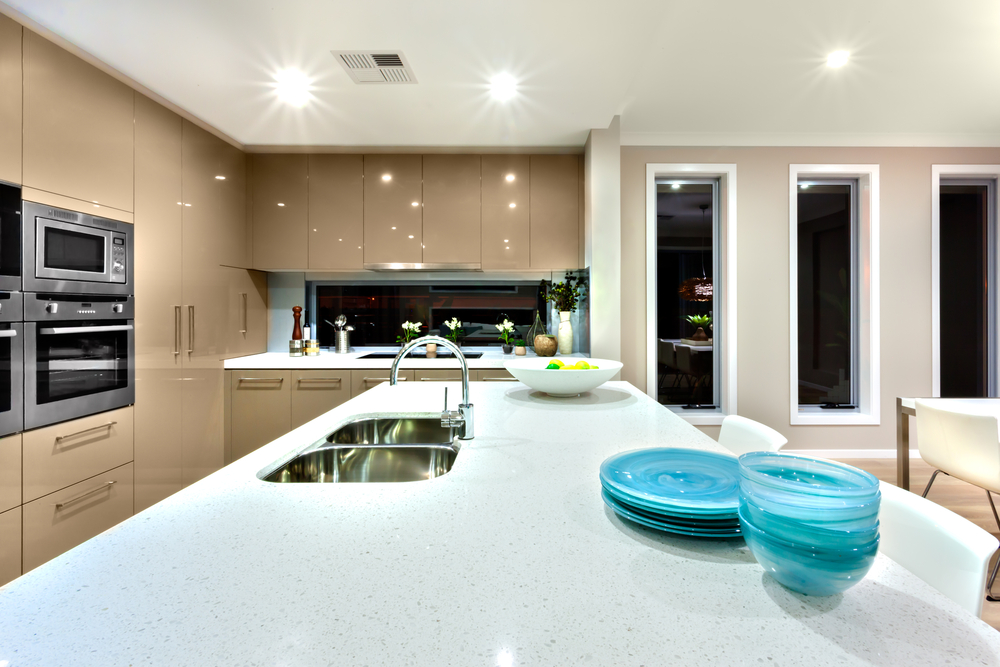
02 Mar Slab, Modular, or Tile Installation
If you’re looking into installing granite countertops in your home, there’s one more very important choice coming your way: will you be getting tile, slab, or modular granite?
Think about Seams
The important distinction between these different forms of granite countertops (or installation method, at least) is just how many seams you’ll have. Seams are the places where different pieces of granite will be joined together. Most marble or granite slabs are around 10 feet in length, so if your countertop is longer than that, it will need at least one seam.
When joining different slabs of natural stone, there are a few important considerations. Firstly, placement of the seam itself has to be strategic in order to make it the most convenient and visually appealing. However, even more so, it has to be functional. For example, a seam can’t go over a hollow in the countertop meant to accommodate a dishwasher underneath, because the heavy slabs need support. Seams also require very careful, professional installation because the slabs must be perfectly level to prevent uneven surfaces on the countertop. Lastly, the slabs must be beautifully matched and sealed in order to make the seam unobtrusive. Properly installed, sometimes it’s virtually impossible to see the seam in a countertop.
That being said, there’s a definite correlation between the number of seams and the cost of the countertops. Large slabs will cost more. Here’s a good list of the benefits of each kind of installation to help you determine what you want to use in your countertop installation.
Slab Installation
- Less maintenance. Seams must be re-sealed regularly and the less seams, the less work to re-seal!
- Looks better. This is the major reason most people opt for slab installation. Slab installation offers no interruption in the beautiful pattern of the granite or marble.
- Easier to clean. Without seams to complicate cleaning, large slabs are a cinch to clean.
- No need to consider where seams will go, whether it will weaken the integrity of your countertop, and if you need to have a secondary counter underneath the granite.
Tile Installation
- Easier installation… probably. It’s easy to assume that tile installation is easier, but you need to consider the technicalities of it. It’s not as heavy, and so easier to get into the kitchen and place. All the same, you want the seams well-done, by a professional with experience, or you could wind up with tricky, uneven joins and eyesore seams.
- Works well with a tricky-layout countertop. There won’t be as much large-scale cutting and strategizing that needs to happen if you have a difficult design and area to work with. Tiles are more flexible.
- Repairs and replacement. Tile installation can be easier to fix, since you can replace small, damaged tiles easier than a damaged slab. However, granite and marble is remarkably hardy and will usually only require replacement if it’s improperly installed.
- Initial cost is cheaper. But consider the cost of installation and maintenance before you assume that it’s the way to go.
Modular Installation
- Modular installation is an attractive option for ambitious DIY-ers, but it can be much more difficult than most people anticipate.
- Makes a nice compromise between slab and tile.
- Works well for standardized kitchens because that’s what it’s built and designed for. It’s a little harder to get it closely customized


No Comments